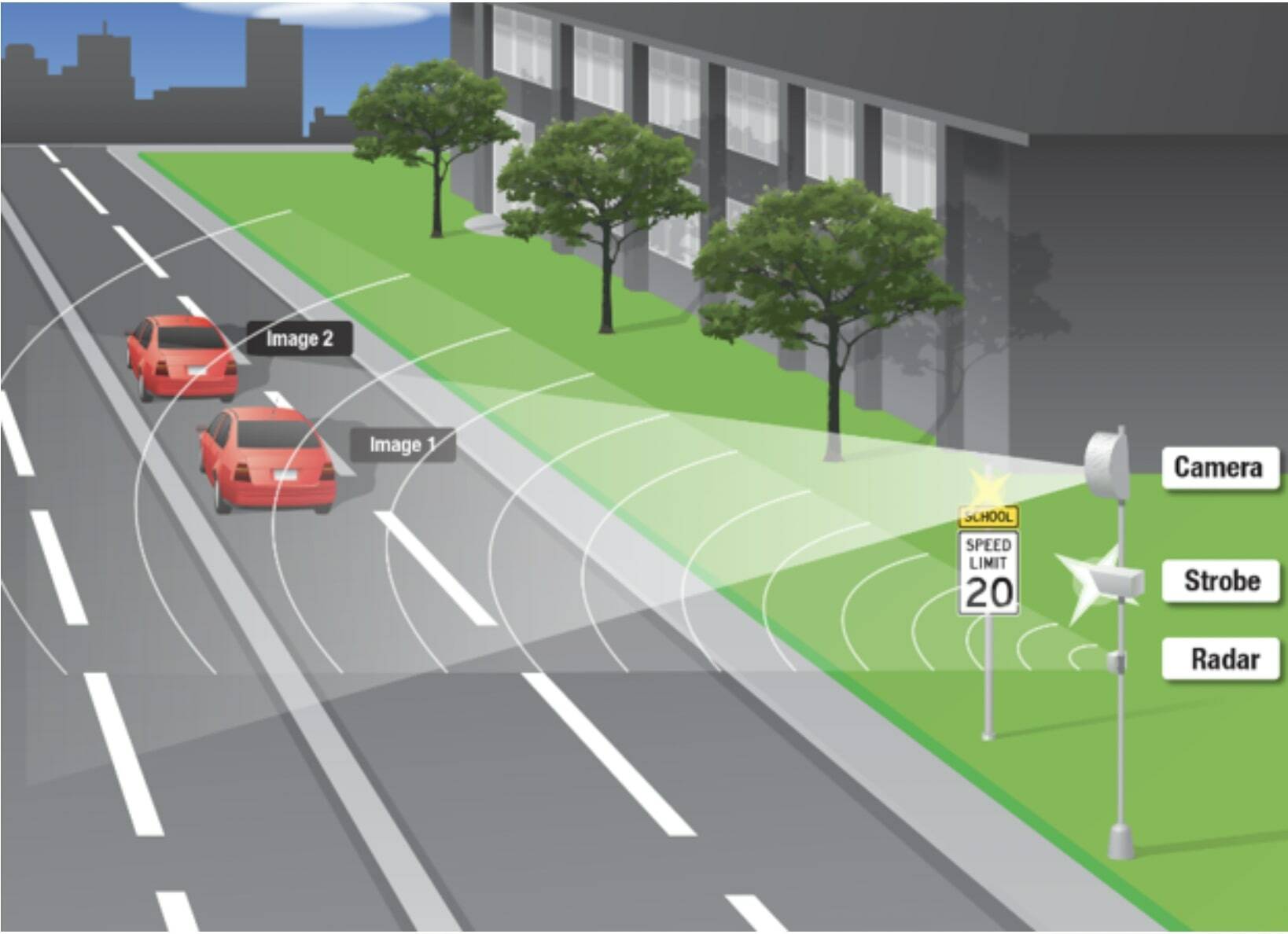When a vehicle doing 30 mph hits a pedestrian, the pedestrian stands about a 50 percent chance of dying — but if something can persuade the driver to slow to 20 mph, the pedestrian’s chance of survival jumps to 90 percent.
Those facts were on the minds of Auburn City Council members in 2022 when they decided to have another go at photo enforcement of a 20 mph speed limit in school zones.
“It’s all about safety,” Jacob Sweeting, Auburn Public Works Department Engineering Services, told city council members on May 13 as he updated them on the program.
Sweeting said that objective was two-fold: not only to improve school speed zone compliance to reduce crashes and reduce the likelihood that crashes would seriously injure or kill, he said, but also to maintain a cost-neutral program that would not require general fund support from the city’s budget that would impose a burden on taxpayers.
The city’s original red light photo enforcement program began in 2006, with cameras not only in school zones, but also at select red lights and railroad crossings. The city dropped that program in 2014 because revenues were no longer keeping up with expenses. In effect, the success of the program led to its demise.
In March 2022, the council adopted a resolution green-lighting the city to enter into a contract with a vendor who would provide for school zone photo enforcement and set out to choose where the cameras would go.
The public works department spent two days studying 28 different school zones when the beacons were flashing. What the study found was that a high number of the 5,000 vehicles whose speed the study had monitored were significantly exceeding the speed limit, even while the beacons were flashing. Further, the study found that the percentage of vehicles traveling significantly over 20 mph varied from 7 percent to 45 percent.
In April and early May 2023, the city installed five cameras and gave speeders a one-month-long, warning-only period to let them know that the cameras were there, and that the cameras were watching. On Sept. 6, the city added seven more cameras, and the number of warnings and citations issued increased sharply, coinciding with the beginning of school and the new cameras.
All told in 2023, the Auburn Police Department issued 14,292 citations and warnings, an average of 172 per day, or about 20 citations or warnings per day per camera, before and after school, and sometimes during lunch. The average citation went to motorists doing about 10 mph above the 20 mph posted speed.
Sweeting said the number of motorists cited during the initial enforcement period was about 27 percent of the total. By the end of 2023, that figure had dropped to 2 percent, indicating, Sweeting said, significant improvement in the way people were driving, a higher compliance rate, and better safety conditions.
Less than half of the citations issued went to city residents, while the rest went to non-residents. The upshot is that Auburn residents got fewer citations, showing they were driving slower, and the program was working. More than 80 percent of the people who received a ticket in 2023 did not get another one.
In addition to making things safer, the second part of the city’s objective, as mentioned above, was that the red-light photo program for schools should prove at least cost-neutral, so it would not become a burden to the city. Of the citations issued, the city was able to collect on about 5,311 of them, a 37 percent rate of remittance, summing to about $1 million. Sweeting said the money went to help pay for the various program expenses.
As of Sept 13, Sweeting said, the city did not have a final estimate of the costs because it did not have final figures from the Auburn Police Department and the city’s maintenance department. But assuming an approximate 25 percent cost of $266,000 for processing and other expenses, he said, the preliminary estimate is that the program met its cost-neutral goal by about $533,000.
Here’s where the cameras are:
Ilalko Elementary/Auburn Riverside High School in both directions of Oravetz Road Southeast.
Lakeland Hills Elementary, southbound.
Lakeland Hills Way Southeast, northbound.
Mt. Baker Middle School, eastbound on 37th Street Southeast.
Evergreen Heights Elementary, eastbound on South 316th Street.
Evergreen Heights Elementary, westbound on South 316th Street.
Arthur Jacobsen Elementary/Auburn Mountainview High School, 132nd Avenue SE, both directions.
Olympic Middle School/ Pioneer Elementary, 21st Street Southeast, both directions.
Olympic Middle School eastbound on 17th Street Southeast
Gildo Rey Elementary, southbound on M Street Southeast.
The current program runs through the 2028 school year, but the city intends to study additional school zones for cameras. It will also consider additional speed zone enforcement outside of school zones for public safety benefits.



